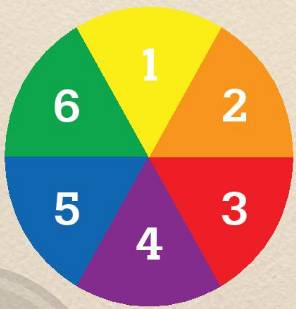Read the following passage and mark the letter A, B, C or D on your answer sheet to indicate the correct answer to each of the questions.
Early humans saw a variety of natural colours around them, from the browns and greens of the soil and plants to the deep blues and red of the sky. They painted their bodies with colours from nature to signal aggression toward an enemy, or to make themselves attractive to a mate.
A girl and a rainbow of crushed ice flavors at Chowpatty Beach, India. Over the centuries, the sources of colours such as blue, purple, and red were high valued and they were often worth as much as gold. In the 19th century, a young chemistry student manufactured the first synthetic dye, and suddenly the world became a much more colorful place. In the 20th century, scientists discovered the psychological effects of colours, and people found ways to use this discovery to influence our feelings and behaviors.
RED
Red, colour of blood, symbolises fire, love and anger. In Eastern cultures, people believe it brings luck, wealth and success. In humans, the color red can send different messages. Some people redden, for example, when they are angry or embarrassed. Researchers have discovered that in sports the team that is wearing red is more likely to win. Why? Because red seems to be the color that signals dominance, giving those dressed in red an advantage in sporting events. In many animal species (including humans), contact with this bold color causes the heart rate to increase. However, one of red’s lighter shades, pink, can have the opposite effect on people. Man in prisons are less agressive when the walls are a specific shade of pink.
YELLOW
Yellow, the colour that comes to mind when we think of sunshine, is found throughout nature and the man-made world as a colour that commands attention; indeed, it is one of the easiest colours to see. This highly visible shade is found on everything from school buses to traffic signs and pens that we use to highlight important information in a text. The colour is also used to caution people; football players, for example, are shown a yellow card as a reminder to behave. It can be used as a stimulant as well: in a number of studies, yellow has been found to help children focus on their work and do better at school.
BLUE
Blue, the colour of the sky and sea, is associated in many cultures with water, religious objects, and protection against evil. Its darker shades represent calm, stability and power. Dark blue, for example, is the colour of the business suit or police uniform; it tells others, ‘I am in control,’ or ‘I am trustworthy.’ Blue is also associated with sadness. It’s common in English, for example, when you are feeling sad or depressed, to talk about ‘feeling blue,’ while in Iran, blue is the colour of mourning, worn when a person dies. Like pink, blue has a calming effect on people. Rooms painted blue help people to relax or sleep. Sleeping pills are often coloured blue to suggest exactly this idea. This colour also seems to reduce feelings of hunger. Blue food is rarely seen in nature, and when it is, such food is usually no longer healthy to consume. It’s just one more example of the power that colour can hold over us.
Yellow is used to highlight information in a text because
A. it is an important colour.
B. it can be used to caution people.
C. it is a highly visible colour.
D. people prefer this colour to other colours.


1. yellow - primary
2. orange - secondary
3. red - primary
4. purple - secondary
5. blue - primary
6. green - secondary